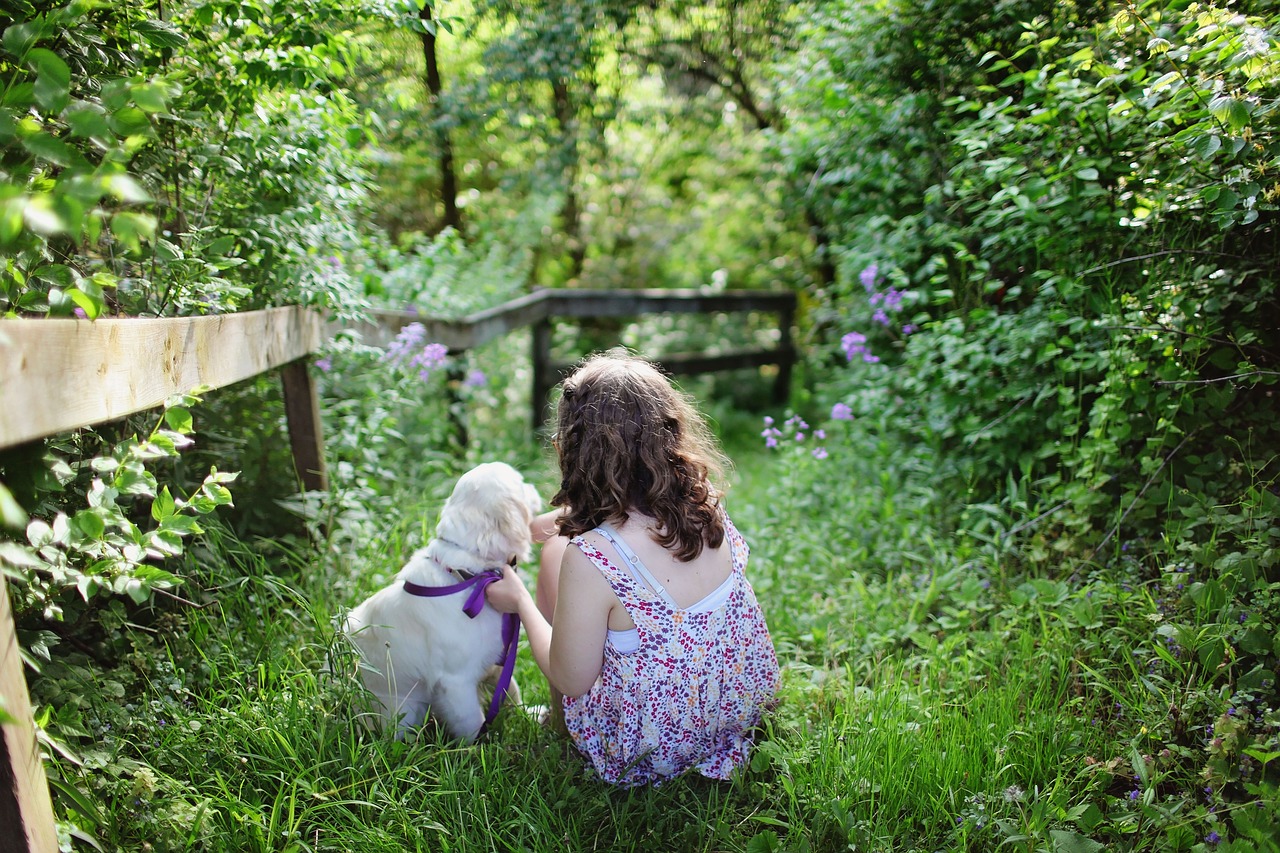
Guest article
Dogs are a big responsibility, but the benefits of raising your children with pets far outweigh the negatives.
Involving your children in your dog’s care and training activities not only makes your pet a well-mannered family member; it teaches your children compassion.
Dogs can ease the transition of suddenly having to share mom or dad’s attention with a new sibling. Dogs can also help children to deal with medical issues as they are exposed to their pet’s veterinarian check-ups and treatments of various ailments. Children raised with pets are more emotionally and physically healthy. It’s much more fun for them to walk a dog or play with their family pet can than watch TV programs or play video games.
Safety for your children and your dog
Every child should be taught basic dog safety rules. They may never have to use them with their own pet, but neighborhood and other strange dogs are never guaranteed to be child-friendly.
Teach your children to stand like a tree.
When a dog wants to chase them or is barking, growling or trying to nip them; they need to immediately stand still. Arms should be folded across their chest or over their face. Their voice should become soft or completely quiet. By doing this, your child instantly becomes much less interesting to the dog. Odds are the dog will calm down and go off to do something else in a matter of moments.
Teach your children to tell you whenever they hear their dog growling
A growl is a warning that your dog is not comfortable with the situation at hand. Your child needs to understand they need to back away immediately or they could be bitten. If you hear your dog growling at any time other than playtime, consult a professional dog trainer immediately. Aggression problems, unless addressed quickly, tend to get worse.
Teach your children to respect their pet’s sense of security
Your child should be taught never to chase or corner a dog. Dogs can become fearful and harm your child out of self-defense.
Teach your children how to safely give your dog a treat
Have your child place the treat in an open palm rather than holding it in their fingers. Placing your hand underneath your child’s hand to help guide him. This technique prevents your child from jerking their hand away at the last second and your dog from lunging to get the treat. You can even teach your dog “leave it” and “take” to help prevent any accidental mouthing.
Never leave any child 12 and under unattended with a dog
Every dog bites under the right circumstances. It is important for you to keep supervision a strict rule in your household. Even your children’s friends should be monitored when your dog is nearby.
Teach your children to be respectful of your dog
In addition to teaching your child the basics of pet care, you should teach them how to treat pets with respect. This is a wonderful way to introduce adult concepts to children in a way they will easily understand.
Teach your children that:
Pets need time off and may not always welcome human attention, especially when eating, playing with their toys or resting. Your children should respect this and not bother your dog when it is sleeping or eating. Providing an indoor crate that is off limits to the children will quickly teach your dog it has a place to retreat to when he has had enough human interaction.
Pets may become upset by too much petting. Teach your children to be mindfulness of your dog’s warning signs, like retreating or growling, by backing away slowly and leaving the dog alone.
Pets have feelings and sense pain just like we do. Help your children see the world through your dog’s eyes. Ask them how they would feel if someone poked at their eyes or pulled their ears. Explain that everyone has limits and that all animals must be treated with respect.
Conclusion
Children can learn the importance of responsibility by acting as a caretaker for a pet. Your dog can provide an ideal opportunity for parent/child bonding while caring for the pet together. Teaching your children what it means to be responsible for another creature’s survival can result in understanding life lessons such as discipline, patience, kindness and attentiveness. Also, allowing children to help care for a pet instills a feeling of competency and accomplishment.
About the author
Laura Pakis is a certified dog trainer and Cynologist. She has been providing knowledge and canine advice for over two decades through her blog, Spike’s Dog Blog, and on her Patreon site When not writing, Laura spends time with her two dogs, Penny and Autumn.